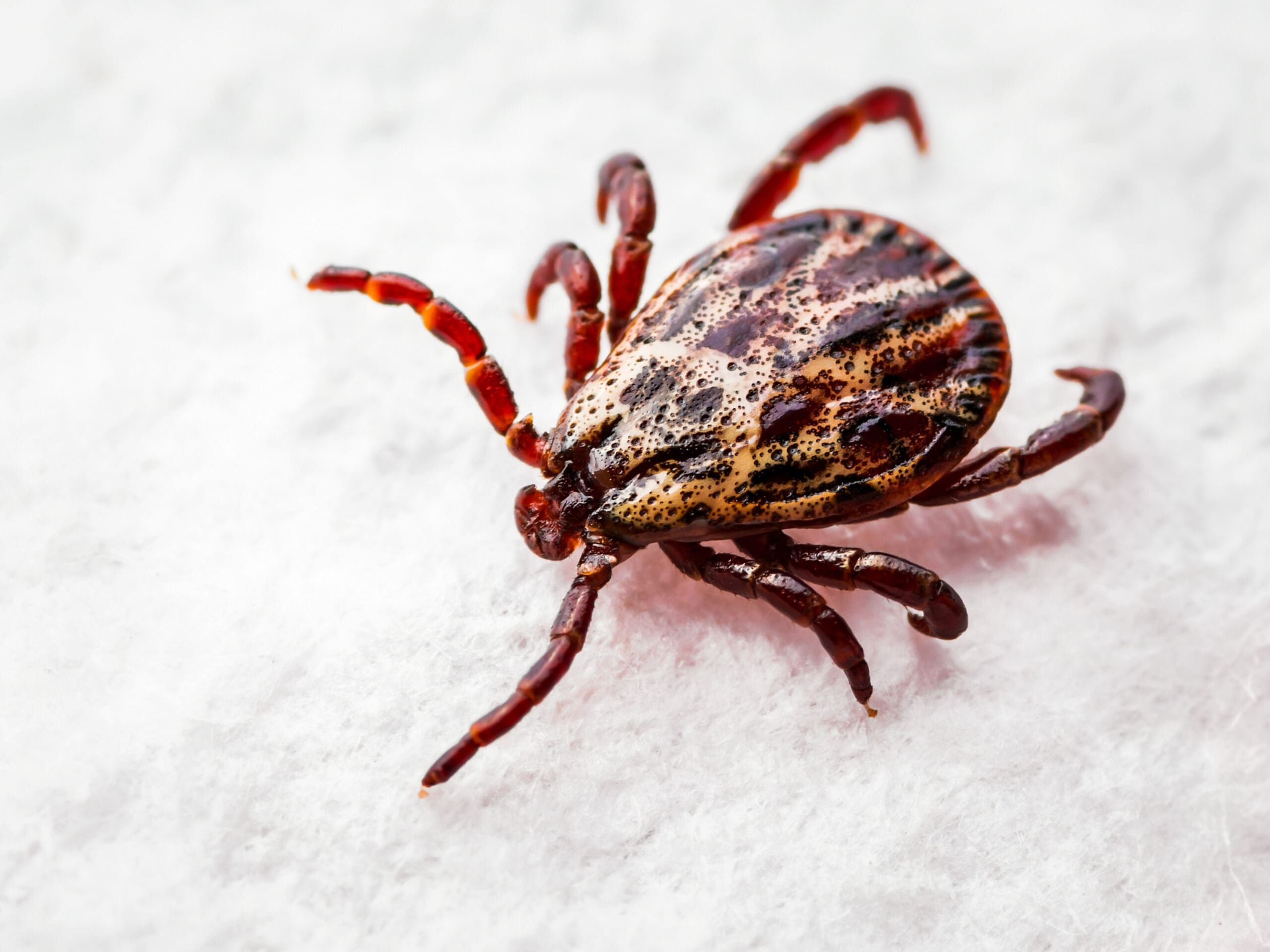The Australian paralysis tick secretes a nerve toxin in its saliva. The tick may not be noticed until a search is instigated for it.
Australian experts recommend the following first aid measures for attached adult ticks.
- Kill adult ticks where they are on your skin using a spray that contains ether (available from pharmacies in Australia). These sprays freeze the tick, killing it and preventing it from injecting its saliva or regurgitating its contents into you.
- You should then leave the tick in place until it drops off, which should happen in the next 24 hours. Don’t compress it or squeeze the tick during this time.
- Once the tick has dropped off, clean the area with an antiseptic or soap and water.
- Don’t remove ticks with household tweezers. If you have trouble killing the tick or it doesn’t drop off, visit your doctor for tick removal.
- Seek medical attention if you develop symptoms such as rash, swelling or fever.
In short: Freeze it; Don’t squeeze it!
To kill small tick larvae or nymphs, apply insecticide cream containing permethrin, which is available from chemists.
Note: Avoid using methylated spirits, kerosene or other chemicals — this may cause the tick to inject more toxins.
Signs and symptoms associated with Australian paralysis tick
There may be local irritation at the site of the tick.
The symptoms of tick paralysis (which is rare) progress from local irritation at the site of the tick and tiredness to muscle weakness, unsteadiness on the feet, double vision and difficulty in swallowing or breathing to (rarely) paralysis. Most human cases of tick paralysis are seen in children.
Sometimes infections can be transmitted via tick bites. Squeezing or disturbing a tick can result in it injecting its saliva into you, and expose you to transmissible diseases from the tick, sensitise you to ticks or meat in the future (mammalian meat allergy), or if you suffer from tick allergy, risk you having a severe allergic reaction.
For more information on all bites and stings, please see our article here.





